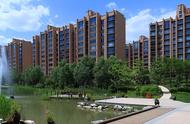直接引语在改为间接引语时,时态需要做相应的调整。具体讲,就是后退一步,即“现在”变成“过去”
(1) 一般现在时→ 一般过去时 (2) 现在进行时→ 过去进行时(3) 一般将来时→过去将来时 (4) 现在完成时→过去完成时 (5) 一般过去时→ 过去完成时 (6) 过去完成时→ 过去完成时
如:She said, “I get up early every day. ” 她说:“我每天都起得很早。”
→She said she got up early every day. 她说她每天起得很早。(一般现在时变为了一般过去时)
注意:如果直接引语表示的是客观事实或客观真理,在变为间接引语时,时态不要变化。比如:
My mother said yesterday, “The Earth goes around the Sun.” 我妈妈昨天说:“地球绕着太阳转。”
My mother said yesterday the Earth goes around the Sun. 我妈妈昨天说地球绕着太阳转。(这里面的时态就没有发生变化)

1.人称代词变化的口诀:一随主,二随宾,第三人称不更新。
“一随主”是指在直接引语变间接引语时,如果直接引语中的主语是第一人称或被第一人称所修饰,变为宾语从句时,从句中的人称要按照主句中主语的人称变化。如:
She said, “My brother wants to go shopping with me. ” 她说:“我哥哥想和我一起去购物。”
→She said her brother wanted to go shopping with her. 她说她哥哥想和她一起去购物。
“二随宾”是指直接引语变间接引语时,若直接引语中的主语及宾语是第二人称或被第二人称所修饰,变为宾语从句时,从句中的人称要跟引号外的主句的宾语一致。如果引号外的主句没有宾语,也可以用第一人称,如:
He said to Kate, “You did your homework very well” 他对凯特说:“你的作业做得很好。”
→He said to Kate she had done her homework very well. 他对凯特说她的作业做得很好。
“第三人称不更新”是指直接引语变间接引语时,如果直接引语中的主语及宾语是第三人称或被第三人称所修饰,变为宾语从句时,从句中的人称一般不需要变化。如:
Mr Smith said, “My mother gave her students a very good speech yesterday. ” 史密斯先生说:“我妈妈昨天给她的学生做了一个很好的演讲。”
→ Mr. Smith said his mother had given her students a very good speech the day before. 史密斯先生说他的母亲前一天给她的学生做了一次很好的演讲。
2.指示代词的变化:this – that , these—those。例如:
Mr Li said, “This is the book that I bought yesterday.” 李先生说:“这就是我昨天买的那本书。”
Mr Li said that was the book that he had bought the day before. 李先生说那就是他昨天买的那本书。

书中的知识
1. 时间状语:now -- then today--that day this week-- that week yesterday --the day before last month--the month before ago--before next week -- the next week tomorrow -- the following(next)day
2. 地点状语:here -- there
四、动词的变化在直接引语变为间接引语时,直接引语句中的某些动词也应做相应的变化。
come– go arrive—leave bring- take
如:“He will come today.” she said. →She said he would go that day. 她说他那天会去。(动词come变为了go,时间状语today变为了that day )
My mother said, “We will arrive here tomorrow.”
→My mother said they would leave there the next day. 我母亲说他们第二天将离开那里。(地点状语here变为there,动词arrive变为leave)

旅行
1. 直接引语如果是陈述句,间接引语应改为由that引导的宾语从句, that 可以省去。如:
She said, “ The performance will begin in five minutes.” 她说:“再过五分钟演出就要开始了。”
→She said (that) the performance would begin in five minutes. (这里的that可以省去)
如果间接引语是由that引导的两个或两个以上的并列从句,第一个连词可以省略,以后的连词一般不省略,以免混乱。如:
The doctor said, “You are not seriously ill, You will be better soon.” 医生说:“你的病不重,你很快就会好的。”
→The doctor said(that)I was not seriously ill and that I would be better soon. 医生说我病得不重,很快就会好的。
2. 直接引语为一般疑问句,间接引语用连词whether或if引导,原主句中谓语动词said要改为asked(me/him/us等),语序是陈述句的语序,这一点非常重要。如:
He said, “You are interested in English, aren’t you?” →He asked whether I was interested in English.
3. 直接引语为选择疑问句,间接引语用whether…or…表达,而不用if…or…,也不用either…or…. 如:
He asked, “Do you speak English or French?”→He asked me whether I spoke English or French.
4. 直接引语为特殊疑问句,改成间接引语时,原来的疑问词作为间接引语的连词,主句的谓语动词用ask(sb.)来表达,语序改为陈述句语序。如:
He asked,“What’s your name?” → He asked(me)what my name was.
5.直接引语为祈使句时,改为间接引语,用带to的不定式表达,谓语动词常是ask, advise, tell, warn, order, request等。如ask sb. to do,(由肯定祈使句变成)ask sb. not to do(由否定祈使句转变),并且在不定式短语中的时间状语、地点状语、人称及时态都作相应的变化。如:
He said,“Be seated, please.”→ He asked us to be seated.
6.有些含有“建议”→、“劝告”→的祈使句,可用suggest, insist, offer等动词转述,如:
He said, “Let’s have a rest.”→He suggested our having a rest.
7.当直接引语形式上是疑问句,有表示请求,建议意义时,可用ask sb. to do sth. /suggest doing/advise sb. to do sth. 等形式转述。如:
“Would you mind opening the door?” he asked. →He asked me to open the door.
8.直接引语是感叹句时,变间接引语可用what或how引导,也可用that引导,如:
She said, “What a lovely day it is!”→ She said what a lovely day it was.

碧海蓝天













